Self Stretching Exercises: Full Body
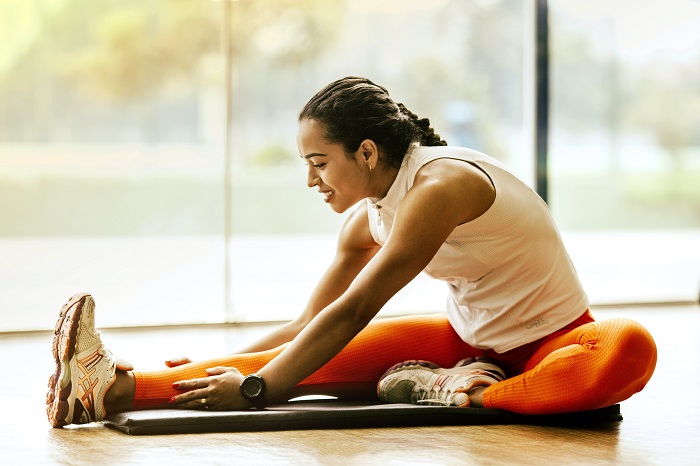
Stretching can be very beneficial for health when practised on a regular basis. Stretching is a vital activity required before any kind of physical exercise. But stretching every day regardless of any physical activity is important as well.
Benefits of Stretching
Some benefits of stretching are given below:-
Improves performance in physical activities.
Improves posture.
Decreases risk of injuries during workouts.
Help movement of joints through their full range of motion.
Increases flow of blood in the muscles.
Enable the muscles to work flexibly
Improves internal strength to perform regular activities
Different Types of Self Stretching Exercises
1. Chest Stretch:-
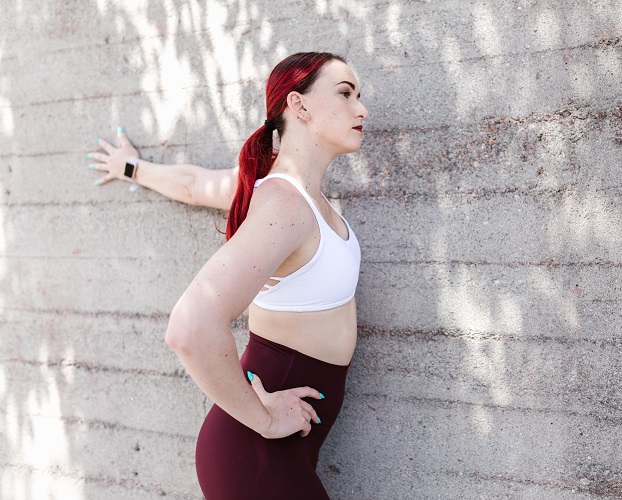
With the side of your body facing a wall, place your left palm on the wall. When doing the chest stretch keep your palm pressed firmly against the wall and maintain your hand in line with your shoulder.
- Breathe out as you push against the wall and rotate your body to open up the chest. Maintain your back straight.
2. While rotating you feel the stretch in your chest and in your left shoulder.
3. Hold for 15 to 30 seconds and repeat on the right side.
The wall chest stretch helps to open up your chest and loosens your biceps and the muscles of your shoulders.
2. Gastrocnemius Stretch:-
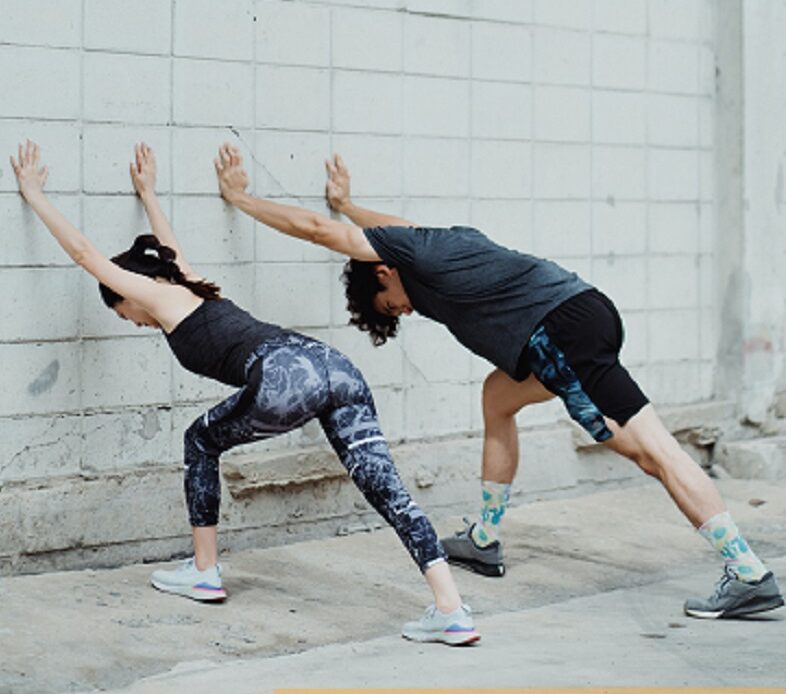
- While in a standing position, press both the hands against the wall.
- Keeoing the back leg straight, push the heels down and slowly lean forward until a stretch is felt in the calf muscles.
- Hold the position for 10-15 seconds.
- Repeat for 2 to 3 times.
Calf stretches can help reduce knee pain and improve flexibility. The calf is made up of two muscles at the back of your lower leg. The larger muscle, gastrocnemius, starts just above the knee, and soleus , which sits underneath, starts just below the knee.
3. Cossack Squat Stretch:-

- While in a standing position, spread the legs about 3 feet apart ( wider than hip-width). Your toes should be pointing out to the sides.
- Squat down on one of the legs while keeping the other leg extended to the side, going as low as it feels comfortable.
- Keep the back straight and feel the stretch in the hip adductor muscles. Hold the position for 10-15 seconds.
- Repeat on the other side.
- Repeat for 2 to 3 times.
This exercise helps to simultaneously strengthen the quads and glutes while stretching out the hip adductors.
4. Hanging Lat Stretch:-
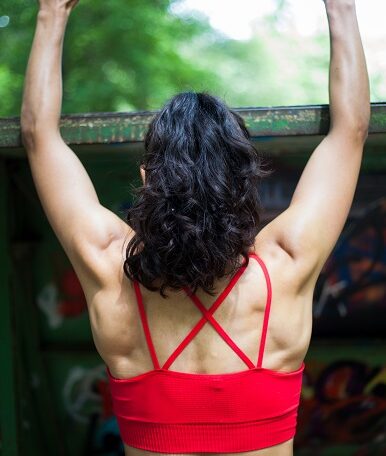

Stretches the Latissimus dorsi, including spinal stability, good posture, and back and shoulder strength.
The hanging Lat works and strengthens the following muscle groups: upper back, shoulders, core, forearms hand and wrist flexors.
- Use a secure overhead bar.
- Grip the bar with an overhand grip and keep your arms shoulder-width apart.
- Move your feet off the step or bench and hang keeping your body relaxed..
- Hang for 10 seconds if you’re new to the exercise.
5. Standing Hamstring Stretch:-
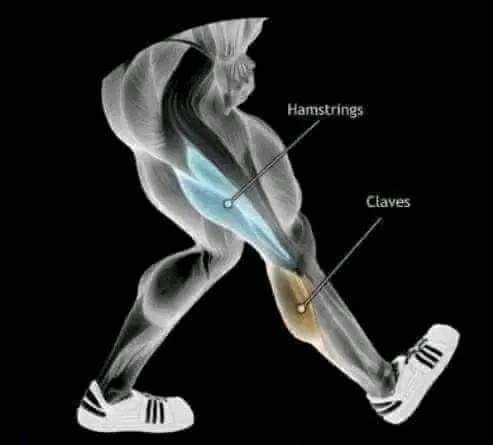
- Stand upright with the spine in a neutral position.
- Place the right leg in front of the body and flex the foot with the toe pointing upwards. Push the heel into the ground.
- Slightly bend the left knee and gently lean forward to place the hands on the straight right leg.
- Hold the stretch for 10–30 seconds.
- Repeat two to four times.
6. Chair Pose:-
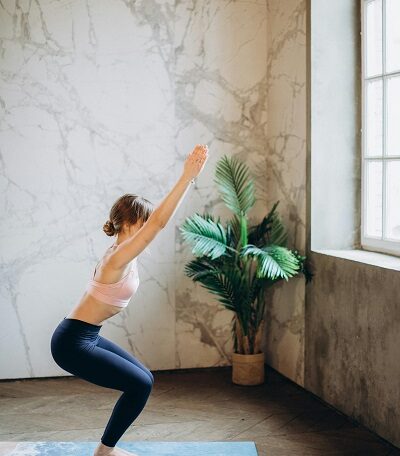
Referred in Yoga as Utkatasana
- Stand straight with a long back and long neck-looking ahead.
- You can orient your hands into a namaste pose in front of your chest.
- You may also lift your hands straight up on both sides of your head.
- As you lift your hands gradually push your glutes outward to sit in a half squat posture.
- Keep the back straight and feel the stretch.
- Hold the pose for 15 seconds and repeat.
7. Downward Facing Dog Pose:-

Referred in Yoga as Parvatasana
- Depending on your level of training, you can either keep your feet flat on the ground or slightly lifted on your toes.
- This pose is also called pyramid stretch.
- With your palms placed flat on the ground lift and stretch your back and neck forming a pyramid shape.
- Hold the pose for 15 seconds and repeat.
- You may combine the holding of the pose with some alternate paddling of the feet.
8. Bridge Pose:-
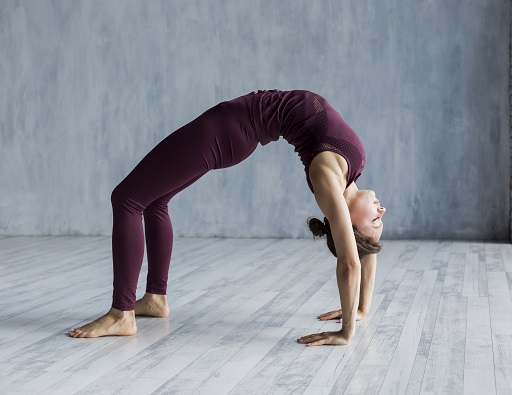
Referred in Yoga as Chakrasana
Also known as Upward Bow Wheel Pose Stretch
B
- This position is an advanced form of stretching. For beginners, it is advised to be performed only in guidance and presence of a coach/ trainer.
- Start by standing straight, with neck and back long.
- Begin to arch the body backwards gradually and keep the feet strongly rooted to the ground. Loosen and bend the knees for ease.
- Extend the arms and try to touch the ground behind you with the palms.
- The body will form an arc and hold it for as long as possible. Return to the initial posture.
- You may take support from your trainer or use a wall for initial support of the palms while bending and reaching out for the ground.
9. Side Lunge Stretch:-
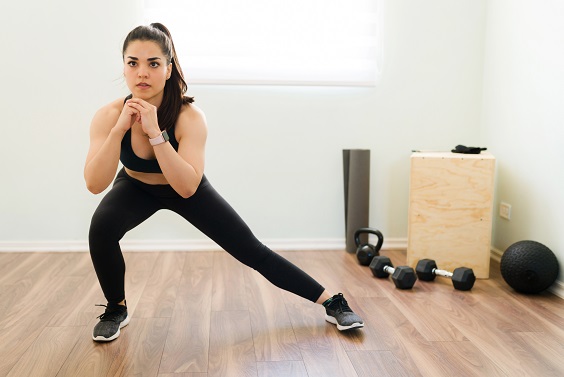
- Stand upright with boot feet facing forward and at double shoulder width apart.
- Put the hands on the hips or close to the center of the body keeping the back and neck, nice and long.
- Sway the body from left to right, i.e, from one leg to another.
- As one leg moves into a lunge, the other leg gets stretched and vice versa.
- Repeat this movement from side to side for 1 minute
10. Quadriceps Stretch:-
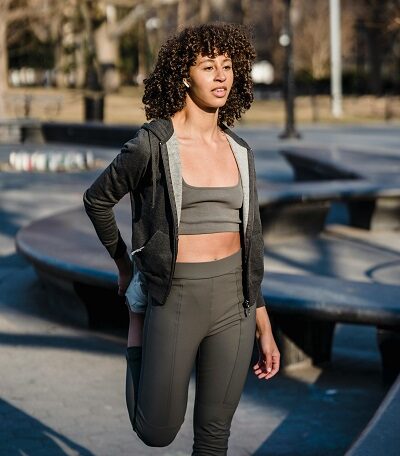
- Stand with straight and long spine and neck.
- Bend the right knee backwards. Take the right hand and grab the right feet from behind.
- Start to pull the feet upwards and you will feel a stretch in your quadriceps muscles ( located in the anterior of the thigh).
- Centre yourself with a nice balance.
- Hold the pose for 15 seconds and repeat on the opposite leg.
11. Half Moon Pose:-
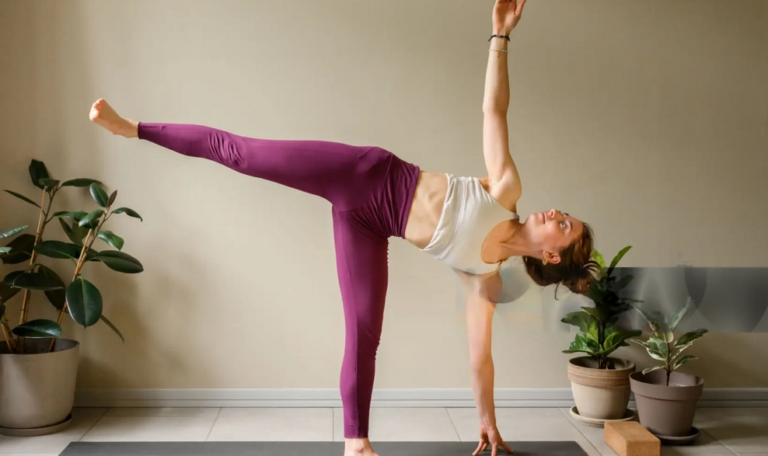
Referred in Yoga as Ardha Chandrasana
- Stand straight. Then keeping the legs straight, bent the knees a bit to touch the ground with one palm extending the hand.
- Then pick a leg and begin to lift the leg upwards keeping it straight and without folding it at the knees.
- Slowly push the leg upwards while maintaining balance with the other leg and one of the arms.
- With your palms placed flat on the ground lift and stretch your back and neck forming a pyramid shape.
- Move the other arm out and upwards from the body. Hold the pose for 10 seconds and repeat on the opposite side.
12. Standing Quad Stretch:-
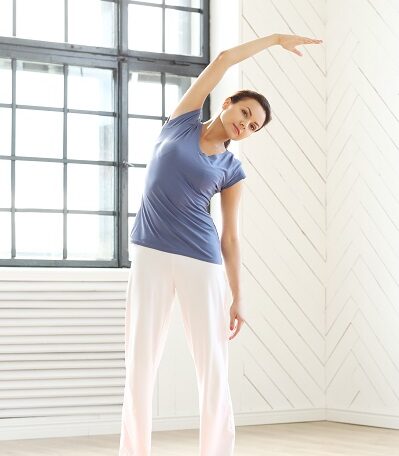
- Stand in a straight posture with long back and neck.
- Then move both the feet by about 3 feet apart and outside the line of the shoulder.
- Slowly bend the knees, push the hips outwards and backwards. Try to sit back in a half squat position.
- You may start by lowering your hands to grab the ankles and then push the body backwards in a squat position as well.
- Once in a squat, look ahead.
- Hold the pose for 20 seconds. This will help to tone the inner thighs and back muscles.
13. Sumo Squat Stretch:-
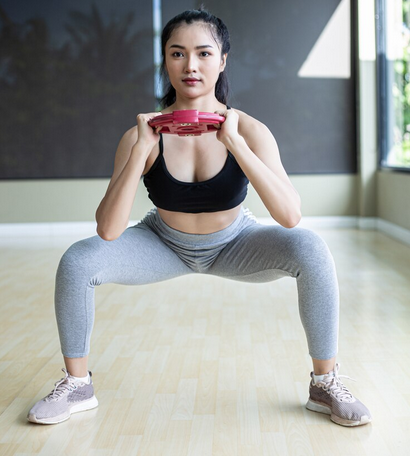
- Stand in a straight posture with long back and neck.
- Then move both the feet by about 3 feet apart and outside the line of the shoulder.
- Slowly bend the knees, push the hips outwards and backwards. Try to sit back in a half squat position.
- You may start by lowering your hands to grab the ankles and then push the body backwards in a squat position as well.
- Once in a squat, look ahead.
- Hold the pose for 20 seconds. This will help to tone the inner thighs and back muscles.
14. Wrist Flexion and Extension Stretch:-
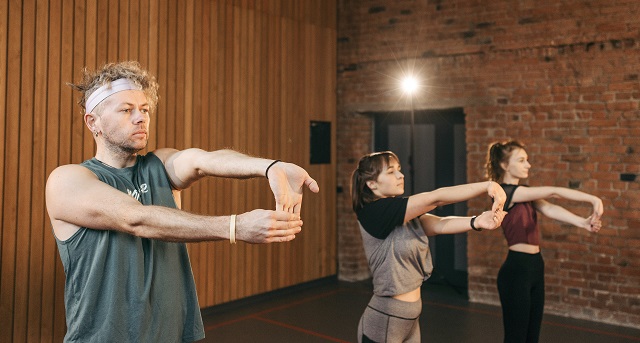
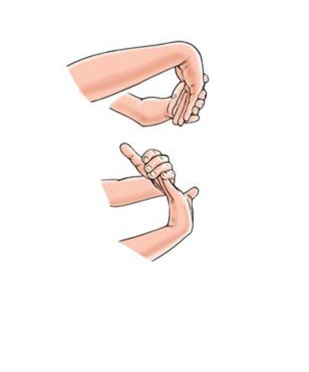
- Stand upright with the spine in a neutral position.
- Place the right leg in front of the body and flex the foot with the toe pointing upwards. Push the heel into the ground.
- Slightly bend the left knee and gently lean forward to place the hands on the straight right leg.
- Hold the stretch for 10–30 seconds.
- Repeat two to four times.

